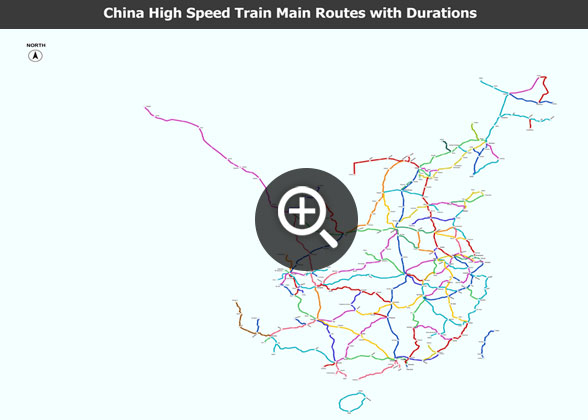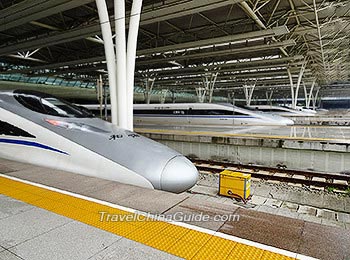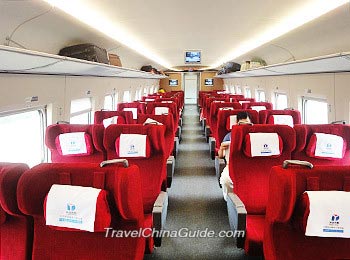China Railway History (2008-Present): High Speed Era
Six Speedups - Support for Operation of High Speed Trains
![]() 1997: The fast trains and overnight trains leaving in the evening and arriving in the morning were put into operation for the first time. The average speed of passenger trains was raised to 65 km/h (40.3 mph) from the previous 48 km/h (29.9 mph) of early 1993.
1997: The fast trains and overnight trains leaving in the evening and arriving in the morning were put into operation for the first time. The average speed of passenger trains was raised to 65 km/h (40.3 mph) from the previous 48 km/h (29.9 mph) of early 1993.
![]() 1998: The top speed of fast trains was raised to 160 km/h (99 mph).
1998: The top speed of fast trains was raised to 160 km/h (99 mph).
![]() 2000: The faster railway network reached about 10,000km (6,200 mi).
2000: The faster railway network reached about 10,000km (6,200 mi).
![]() 2001: An additional 3,000km (1,850 mi) of railway were sped up.
2001: An additional 3,000km (1,850 mi) of railway were sped up.
![]() 2004: Another 3,500 km (2,200 mi) of railway were sped up.
2004: Another 3,500 km (2,200 mi) of railway were sped up.
![]() 2007: Intercity high speed trains started to run along improved rail tracks. Their top speed reached 250 km/h (155 mph).
2007: Intercity high speed trains started to run along improved rail tracks. Their top speed reached 250 km/h (155 mph).
Although the speed had been greatly raised and numerous fast trains had been put into service, the rail capacity still could not meet the demand. To deal with this, the plan of constructing a high speed railway network came into being, and the six nationwide China train speedups provided sound a technological foundation for the construction of high speed railways and operation of high speed trains.
|
|
Massive Construction of High Speed Railways
 |
| China High Speed Railway Map |
Continuous Pursuing of Advanced High Speed Rail Technologies
China High Speed Railways Go Abroad
Also, the advanced high speed rail technologies have been approved by international markets. China is now helping to build high speed railways between Jakarta and Bandung in Indonesia, and between Medina and Mecca in Saudi Arabia. More overseas high speed rail projects are under negotiation or being planned. Meanwhile, high speed rail products also become popular worldwide. For instance, IGBT, similar to CPU of computers have been exported to India.

